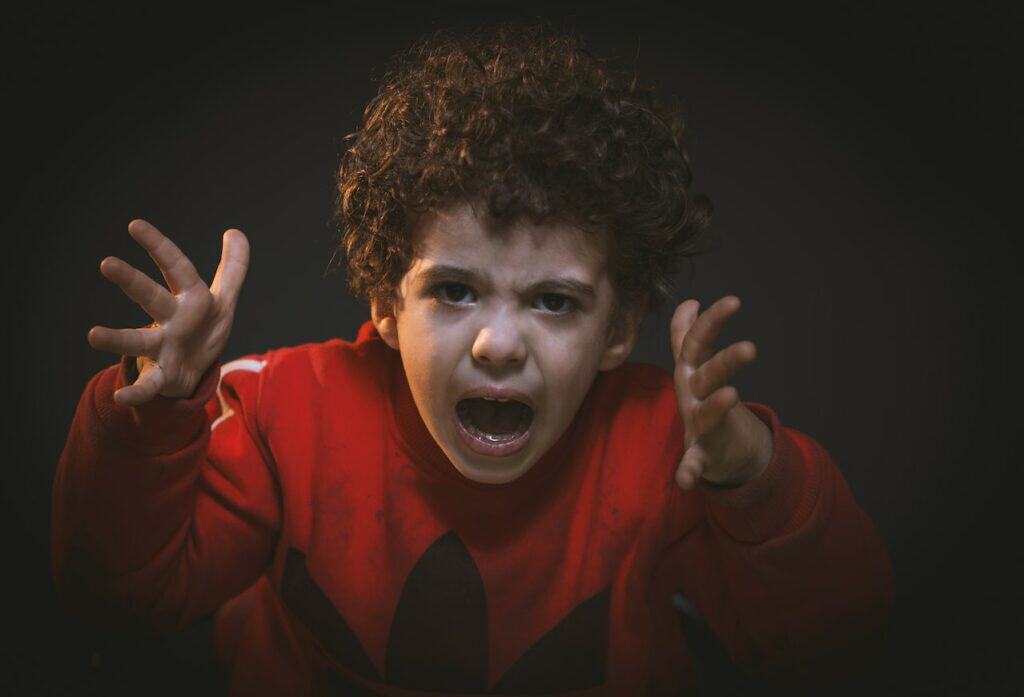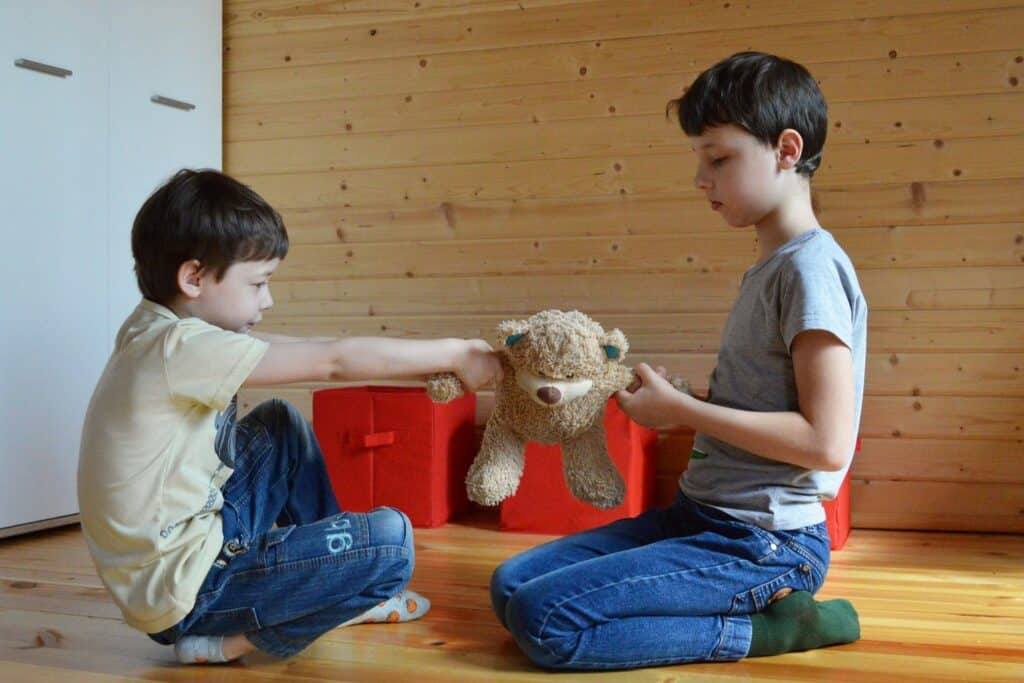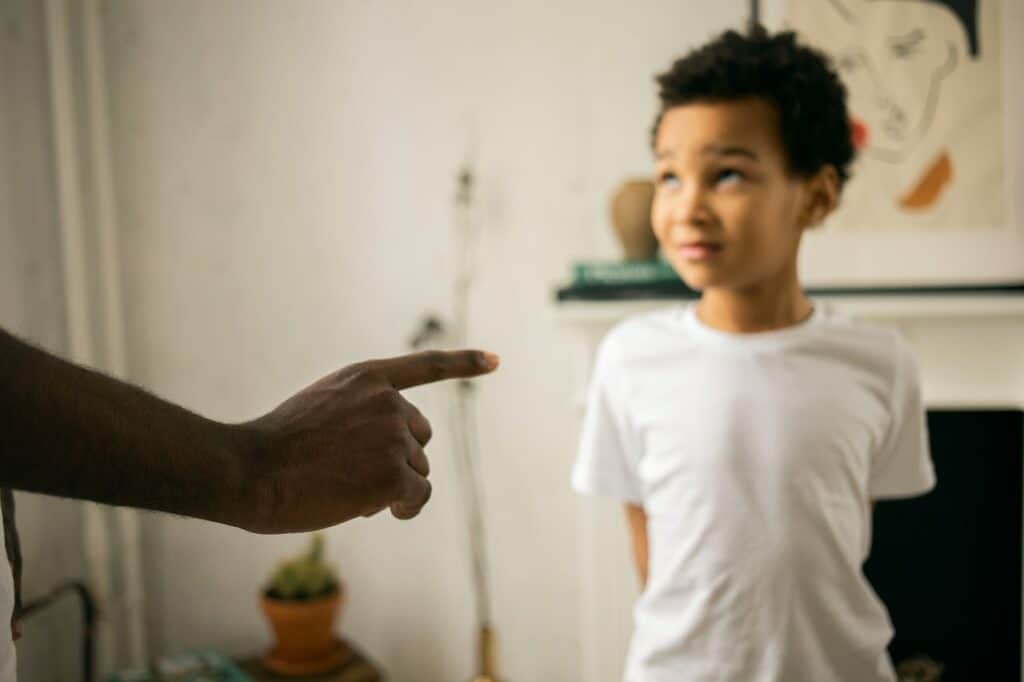Hitting is a common behavior among toddlers, but it can be concerning when it happens for no apparent reason. Parents may feel helpless and frustrated when their toddler hitting others for no reason. Understanding the reasons behind this behavior and finding effective ways to address it is crucial for both the child’s development and the well-being of those around them.
Toddlers hit for a variety of reasons, including frustration, lack of communication skills, and a desire for attention. It can also be a way for them to assert their independence or to test boundaries. Identifying the triggers that lead to hitting can help parents prevent this behavior from happening in the first place. However, when hitting does occur, it’s important to respond in a way that is both firm and compassionate.
Key Takeaways
- Understanding the reasons behind toddler hitting is essential for addressing this behavior effectively.
- Identifying triggers and responding in a firm yet compassionate manner can help prevent hitting.
- Proactive measures, such as teaching alternative behaviors and seeking professional help when necessary, can also be effective in dealing with toddler hitting.
Understanding Toddler Behavior
Toddlers are at an age where they are starting to explore their surroundings and learn about the world around them. They are also learning how to communicate their needs and emotions, which can sometimes lead to hitting others for no apparent reason.
Behavior in toddlers is heavily influenced by their development and temperament. Each child develops at their own pace and has their own unique personality, so it is important to understand their individual needs and behaviors.
At this developmental stage, toddlers are still learning how to regulate their emotions and impulses. They may not yet have the vocabulary to express their emotions, which can lead to frustration and acting out. Hitting may be a way for them to release this frustration.
It is also important to consider the context in which the hitting occurs. Toddlers may hit when they are feeling overwhelmed or overstimulated, such as in a crowded or noisy environment. They may also hit when they feel threatened or scared, such as when encountering a new person or situation.
As parents and caregivers, it is important to model appropriate behavior and teach toddlers how to express their emotions in a healthy way. This can include teaching them to use words to express their needs and emotions, and providing them with a safe and calm environment to explore and learn.
Overall, understanding toddler behavior requires patience, empathy, and a willingness to adapt to each child’s unique needs. By providing a supportive and nurturing environment, parents and caregivers can help toddlers navigate this exciting but sometimes challenging stage of development.
Identifying Triggers
Toddler hitting others for no reason can be a frustrating and confusing behavior for parents to deal with. However, understanding the triggers that lead to hitting can help parents proactively address the behavior.

Situational Triggers
Situational triggers refer to events or circumstances that may lead to hitting behavior. These triggers can include:
- Overstimulation: When a toddler is overwhelmed by their environment or too many people, they may become stressed and lash out by hitting.
- Testing Limits: Toddlers are learning about boundaries and may test limits by hitting to see what kind of reaction they get from others.
- Frustration: When a toddler is unable to communicate their needs or wants effectively, they may become frustrated and resort to hitting.
- Lack of Attention: If a toddler is feeling ignored or neglected, they may hit as a way to get attention.
Emotional Triggers
Emotional triggers refer to internal feelings or emotions that may lead to hitting behavior. These triggers can include:
- Anger: When a toddler is feeling angry or upset, they may hit as a way to express their emotions.
- Fear: If a toddler is feeling scared or threatened, they may hit as a way to defend themselves.
- Jealousy: If a toddler is feeling jealous of another child or adult, they may hit as a way to express their emotions.
By identifying the triggers that lead to hitting behavior, parents can take steps to address the behavior proactively. This may include removing the child from a stressful situation, setting clear boundaries, or teaching the child alternative ways to express their emotions.
The Role of Communication
Communication plays a crucial role in helping toddlers understand and express their emotions. When a toddler hits others for no reason, it could be because they are trying to communicate their feelings but do not have the language skills to do so effectively.

Parents and caregivers can help by teaching toddlers appropriate ways to communicate their emotions. This can be done through modeling, such as using “I” statements and expressing emotions in a calm manner.
It is also important to validate a toddler’s emotions and provide them with the language to express themselves. For example, instead of telling a toddler to “stop hitting,” a caregiver could say “I see that you are feeling frustrated. Can you tell me why?”
Empathy is another important aspect of communication. By showing empathy towards a toddler’s emotions, caregivers can help them develop empathy towards others. This can be done by acknowledging a toddler’s feelings and providing comfort and support.
In summary, effective communication is key in helping toddlers understand and express their emotions. By teaching appropriate communication skills, validating emotions, and showing empathy, caregivers can help reduce instances of hitting and promote positive social interactions.
Parenting Strategies
1. Setting Boundaries
One effective strategy for dealing with a toddler who hits others for no reason is to set clear boundaries. Parents should establish rules and consequences for hitting, and consistently enforce them. This can help the child understand that hitting is not acceptable behavior and will not be tolerated.
Parents can also create a safe and calm environment for their child by removing any potential triggers for hitting, such as toys or objects that the child may be tempted to hit others with. This can help prevent hitting before it occurs.
2. Modeling Behavior
Parents can also model behavior for their child by demonstrating appropriate ways to handle frustration and anger. This can include taking deep breaths, using calming words, and finding alternative ways to express emotions. When parents model positive behavior, their child is more likely to follow suit.
3. Teaching Self-Control
Teaching self-control is another important strategy for dealing with toddler hitting. Parents can help their child learn to identify and regulate their emotions, and provide them with tools to manage their behavior. This can include teaching the child to count to ten or take a break when they feel angry or frustrated.
Parents can also help their child develop empathy by encouraging them to consider the feelings of others. This can help the child understand the impact of their actions and learn to control their behavior in order to avoid hurting others.
By setting clear boundaries, modeling positive behavior, and teaching self-control, parents can help their toddler learn to manage their emotions and behavior without resorting to hitting others.
Dealing with Hitting in Social Settings

Playground Incidents
Playgrounds can be a fun and exciting place for toddlers to play and socialize with other children. However, it is not uncommon for toddlers to hit others for no apparent reason. When a toddler hits another child at the playground, it is important to address the situation immediately.
Parents should calmly intervene and explain to their child that hitting is not acceptable behavior. They should also apologize to the other child and their parent, and offer to help in any way they can. Encouraging their child to use words to express their feelings instead of hitting can also be helpful.
Daycare Challenges
Hitting can also be a common occurrence in daycare settings. Toddlers may hit their peers out of frustration, jealousy, or simply because they do not know how to communicate their feelings effectively.
Daycare providers should have a clear policy in place for dealing with hitting incidents. They should intervene immediately, separate the children involved, and explain to the hitter that hitting is not acceptable behavior. They should also offer comfort and support to the child who was hit, and encourage them to express their feelings.
Playdate Protocol
Playdates can be a great way for toddlers to socialize and learn how to interact with others. However, hitting can quickly turn a fun playdate into a stressful situation.
Parents should discuss their expectations with their child before the playdate begins. They should explain that hitting is not acceptable behavior and that there will be consequences if it occurs. They should also monitor their child’s behavior closely and intervene immediately if they see any signs of aggression.
If a child does hit another child during a playdate, parents should calmly intervene and explain why hitting is not acceptable. They should also apologize to the other child and their parent, and offer to help in any way they can.
Overall, dealing with hitting in social settings can be challenging, but it is important to address the behavior immediately and provide guidance to toddlers on how to express their feelings in a more appropriate manner.
Proactive Measures and Alternatives
When it comes to dealing with a toddler who hits others for no reason, it’s important to take a proactive approach to prevent the behavior from happening in the first place. Here are some measures that can be taken:

- Teach alternative behaviors: Toddlers may hit because they don’t have the language skills to express their emotions. Teaching them alternative behaviors, such as using words to express their feelings, can be helpful. Role-playing different scenarios with them can also be a useful tool.
- Model appropriate behavior: Toddlers learn from the adults around them. Modeling appropriate behavior, such as using words instead of physical aggression to express frustration, can be a powerful teaching tool.
- Provide positive reinforcement: Praising and rewarding toddlers when they use alternative behaviors can be a powerful motivator. This can include verbal praise, stickers, or other small rewards.
- Create a safe and structured environment: Toddlers thrive in environments that are predictable and structured. Setting up a routine and creating clear boundaries can help prevent aggressive behavior.
- Identify triggers: Paying attention to what triggers a toddler’s hitting behavior can help prevent it from happening in the future. This can include things like hunger, fatigue, or overstimulation.
It’s important to note that even with proactive measures in place, toddlers may still hit. When this happens, it’s important to react appropriately. Some alternatives to physical punishment include:
- Time-outs: Time-outs can be an effective way to remove a toddler from a situation and give them a chance to calm down. It’s important to keep time-outs short and to explain why the child is being given a time-out.
- Redirecting: Redirecting a toddler’s attention to a different activity can be a useful tool. This can be as simple as offering them a toy or suggesting a different activity.
- Ignoring: In some cases, ignoring the behavior can be the best course of action. This can be effective for attention-seeking behavior.
Overall, taking a proactive approach to preventing hitting behavior and using appropriate alternatives when it does happen can be an effective way to help toddlers learn appropriate behavior.
When to Seek Professional Help
While it is common for toddlers to hit others as they learn to regulate their emotions, some children may exhibit aggressive behavior that is not developmentally appropriate. If a child is hitting others for no reason, it may be a sign of an underlying issue that requires professional help.

Research has shown that aggressive behavior in toddlers can have long-term consequences, including difficulty forming positive relationships with peers and adults, poor academic performance, and even involvement in criminal activity later in life. Therefore, it is important to address this behavior as early as possible.
If a child’s hitting behavior is persistent and severe, it may be a sign of a sensory processing disorder. Children with this condition may have difficulty processing sensory information, which can lead to overstimulation and a heightened stress response. In turn, this can cause them to lash out and hit others.
If a child’s hitting behavior is causing harm to themselves or others, or if it is interfering with their ability to participate in normal activities, it is important to seek professional help. A pediatrician or child psychologist can conduct an evaluation to determine if there is an underlying issue that needs to be addressed.
It is important to approach the situation with a neutral and non-judgmental attitude. Parents should work with professionals to develop a plan to address the behavior and provide support to the child. This may include therapy, behavior modification techniques, and sensory integration therapy.
In summary, if a toddler is hitting others for no reason, it may be a sign of an underlying issue that requires professional help. Parents should seek the advice of a pediatrician or child psychologist to determine the best course of action to address the behavior and support the child.
Related post: Toddler Crying Uncontrollably For No Reason
Frequently Asked Questions
How do you discipline a toddler that hits others?
Disciplining a toddler that hits others can be challenging. One effective approach is to use positive reinforcement by praising good behavior and redirecting negative behavior. It’s important to set clear boundaries and consequences for hitting, such as a time-out or loss of a privilege. Consistency in discipline is key.
Why does my toddler hit me, but not daddy?
Toddlers may hit one parent but not the other for a variety of reasons. It could be due to a stronger emotional connection with one parent or a preference for one parenting style. It’s important to address the behavior and find ways to redirect it, regardless of who the target is.
Why does my toddler hit other kids for no reason?
Toddlers may hit other kids for a variety of reasons, including frustration, lack of communication skills, and a desire for attention. It’s important to teach toddlers appropriate ways to express their emotions and communicate their needs.
How to stop a 2 year-old from hitting and throwing things?
To stop a 2 year-old from hitting and throwing things, it’s important to provide alternative ways for them to express their emotions and redirect their behavior. This can include providing sensory toys or activities, teaching them sign language or other communication methods, and using positive reinforcement for good behavior.
Why is my child hitting others?
Children may hit others for a variety of reasons, including frustration, lack of communication skills, and a desire for attention. It’s important to address the behavior and find ways to redirect it, such as teaching appropriate ways to express emotions and communicate needs.
Supernanny toddler hitting
The television show Supernanny has addressed toddler hitting in several episodes. The show emphasizes the importance of consistent discipline, positive reinforcement for good behavior, and teaching appropriate ways to express emotions. It’s important to note that every child is different and may require a unique approach to addressing hitting behavior.

Iesha is a loving mother of 2 beautiful children. She’s an active parent who enjoys indoor and outdoor adventures with her family. Her mission is to share practical and realistic parenting advice to help the parenting community becoming stronger.
